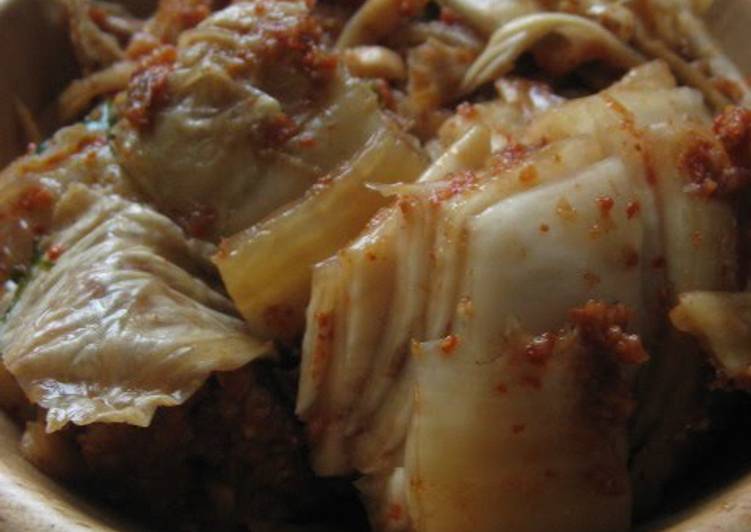
Hello everybody, I hope you’re having an incredible day today. Today, I will show you a way to prepare a distinctive dish, expats: if you have chinese cabbage, let's make kimchi. It is one of my favorites food recipes. For mine, I’m gonna make it a little bit unique. This will be really delicious.
Great recipe for Expats: If You Have Chinese Cabbage, Let's Make Kimchi. I researched how to make kimchi on a lot of recipe sites. I can't get a hold of fermented krill paste, so it's omitted.
Expats: If You Have Chinese Cabbage, Let's Make Kimchi is one of the most well liked of current trending foods on earth. It’s simple, it is quick, it tastes yummy. It is enjoyed by millions every day. Expats: If You Have Chinese Cabbage, Let's Make Kimchi is something that I’ve loved my entire life. They are nice and they look wonderful.
To get started with this particular recipe, we must prepare a few ingredients. You can cook expats: if you have chinese cabbage, let's make kimchi using 13 ingredients and 8 steps. Here is how you can achieve it.
The ingredients needed to make Expats: If You Have Chinese Cabbage, Let's Make Kimchi:
- Take 2 kg Chinese cabbage
- Take 120 ml Korean coarse grind red chili pepper
- Take 1 medium bulb Garlic
- Take 50 grams Ginger
- Get 1/2 Apple (or Asian pear)
- Make ready 1/3 large Onion
- Take 3 to 4 stalks Green onion
- Get 1/3 Daikon radish
- Get 3 tbsp Sakura shrimp (or dried shrimp)
- Get 70 ml Korean fish sauce
- Take 1 tbsp Flour (mixed with 3-4 times the amount of water and microwaved)
- Get 1 tbsp Sugar
- Take 8 grams Dashi stock granules (I used kombu)
All, however, are fermented, complex in. (Cabbage and Chinese cabbage are especially juicy.) Then, after you stuff your sauerkraut or kimchi into your jar, the fermentation process begins. After a day or so it begins to form bubbles within and the juices start to come up around the top of the jar. This is the fermentation process producing gasses (this is what you want!). Place the shredded cabbage into a large, wide, deep pot or bowl.
Instructions to make Expats: If You Have Chinese Cabbage, Let's Make Kimchi:
- Tear the cabbage into 4 or 6 pieces depending on their size. Add 40 g of salt to every kilo of cabbage, salting heavily on the white stems.
- Put the cabbage in a container large enough to hold them. Put a weight on top and leave overnight. I put on a large plate and placed filled water bottles on top.
- The next day, wring out the cabbage lightly, and let dry naturally.
- Blend the ginger, garlic, apple, and onion together into a paste (if you find it hard to form a paste, add fish sauce for liquid).
- Cut the daikon radish into quarters and slice. Cut the green onions into 3 cm pieces. Cut the white parts in half lengthwise.
- Add the chili pepper, fish sauce, dashi stock granules, flour paste, daikon radish and green onion to the paste from Step 4.
- Push the paste in between the white parts of the cabbages, and roll up the leaves.
- Put the cabbage into a plastic bag and leave for 1 to 2 nights at room temperature. Store in the refrigerator. Wait for at least a week before eating.
Add cabbage and coat with seasoning mixture. Pack the seasoned cabbage into a large airtight jar with lid. How to choose a cabbage for kimchi—Usually a fresh and denser napa cabbage is great for kimchi. Roughly clean the cabbage and remove any bad leaves. Cut it into two or four pieces.
So that is going to wrap it up with this exceptional food expats: if you have chinese cabbage, let's make kimchi recipe. Thank you very much for reading. I’m confident that you will make this at home. There’s gonna be interesting food at home recipes coming up. Don’t forget to save this page in your browser, and share it to your family, colleague and friends. Thanks again for reading. Go on get cooking!

